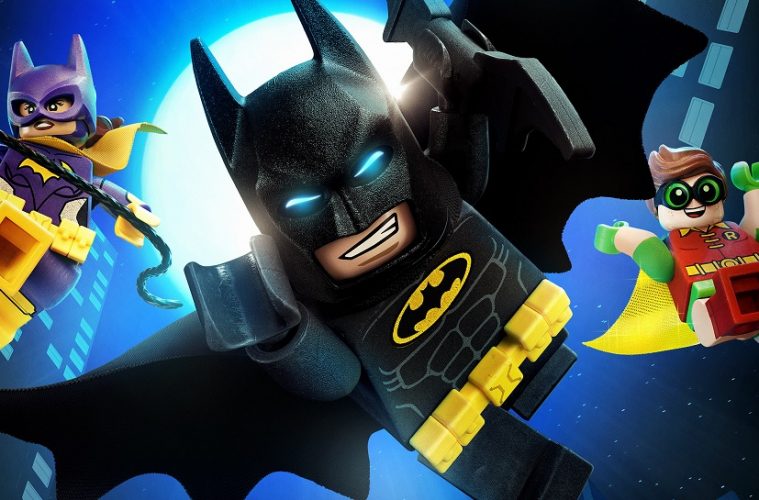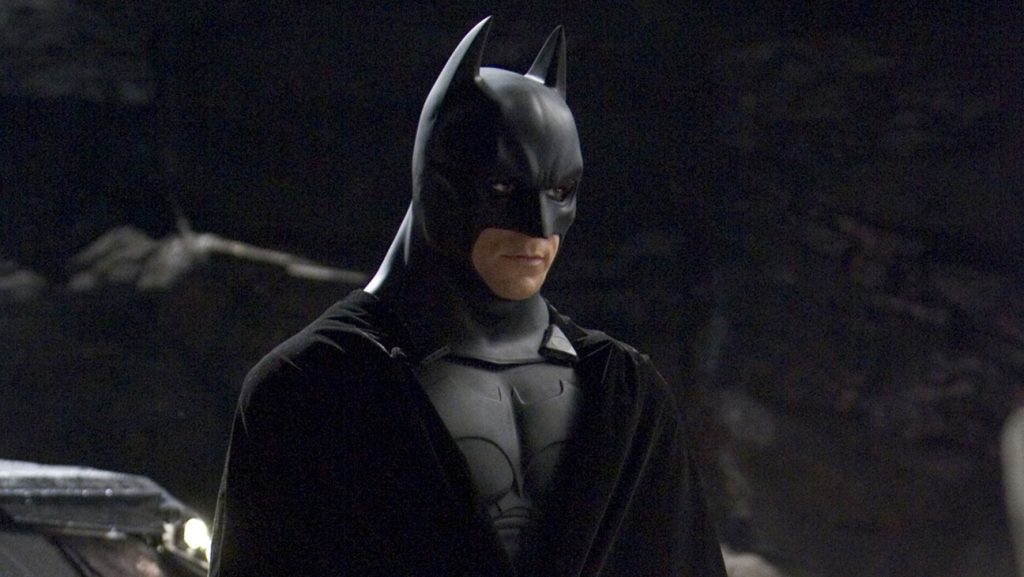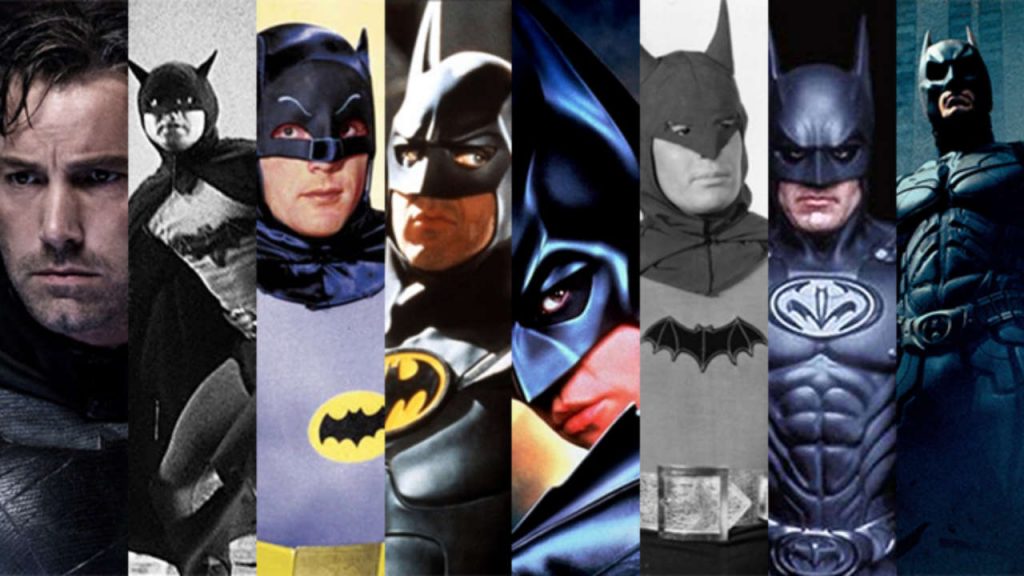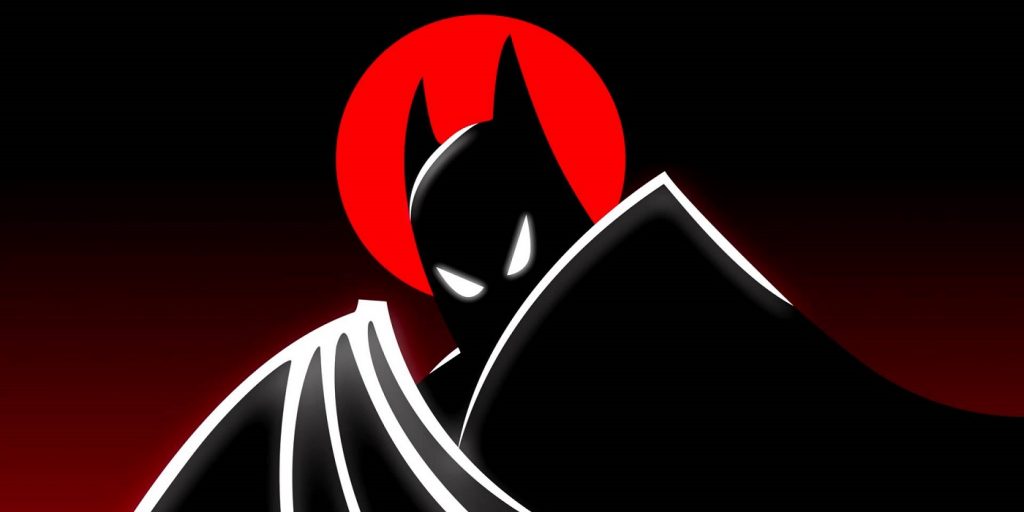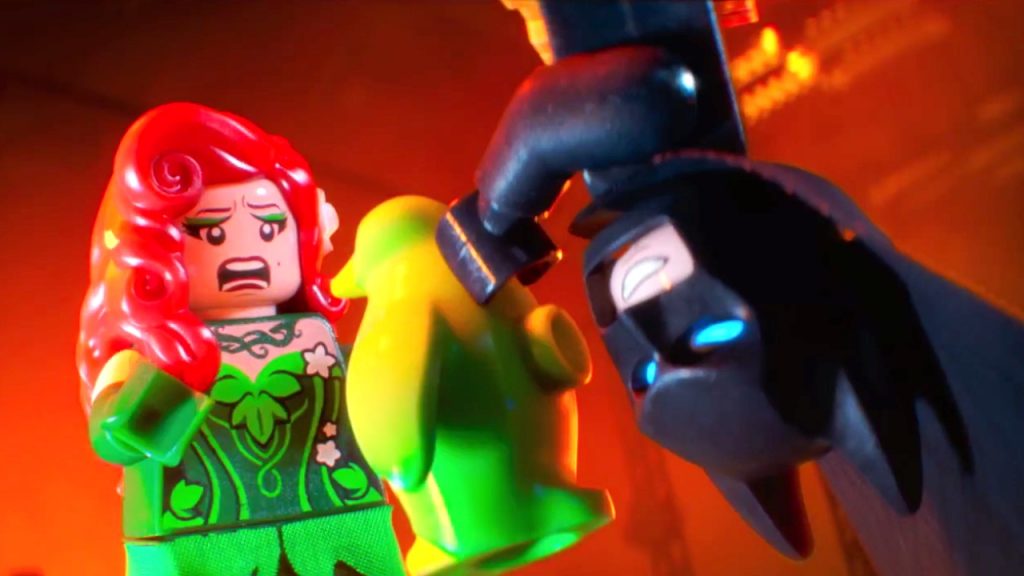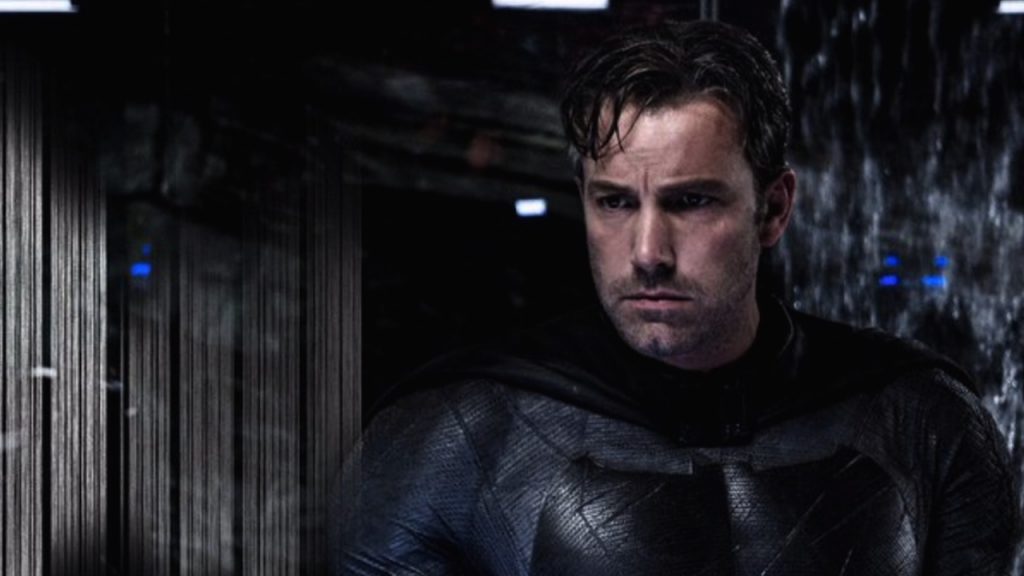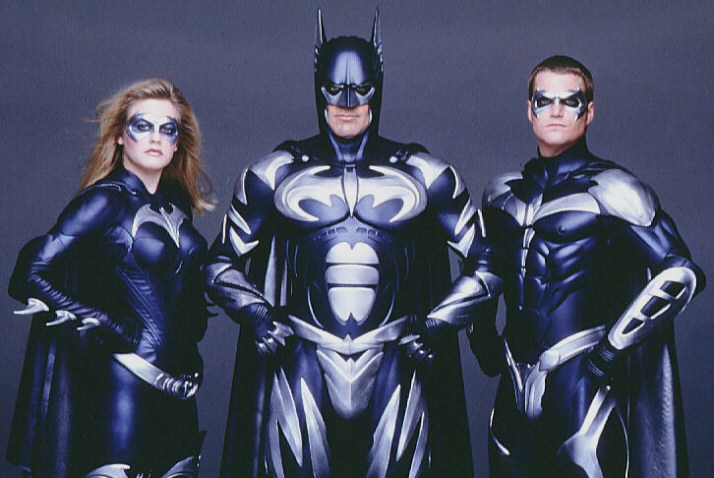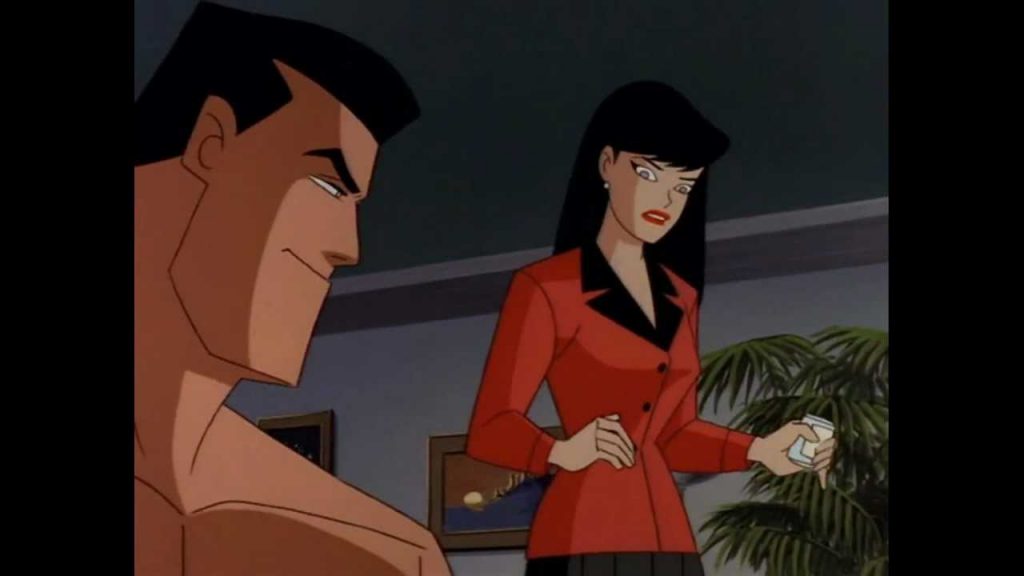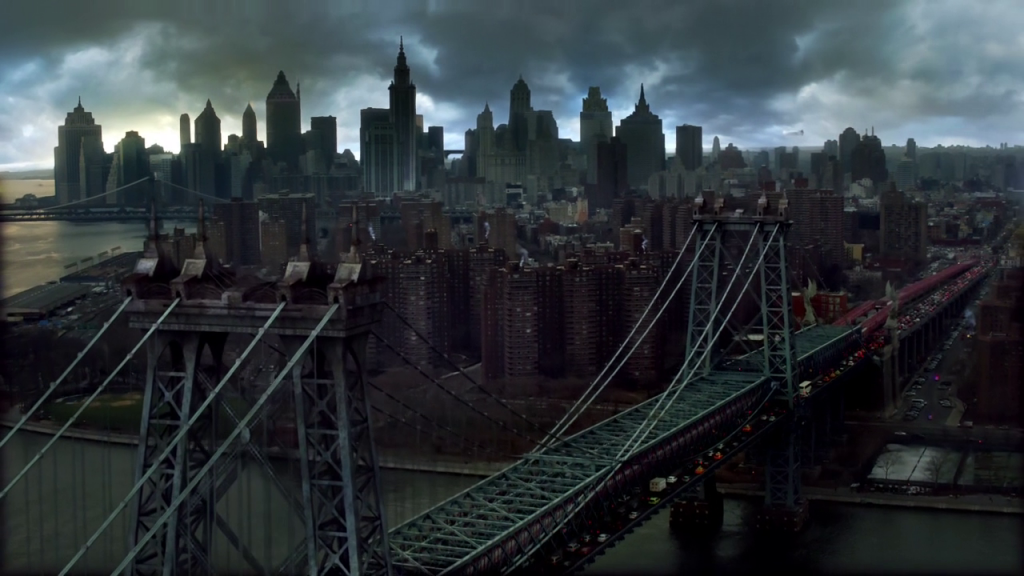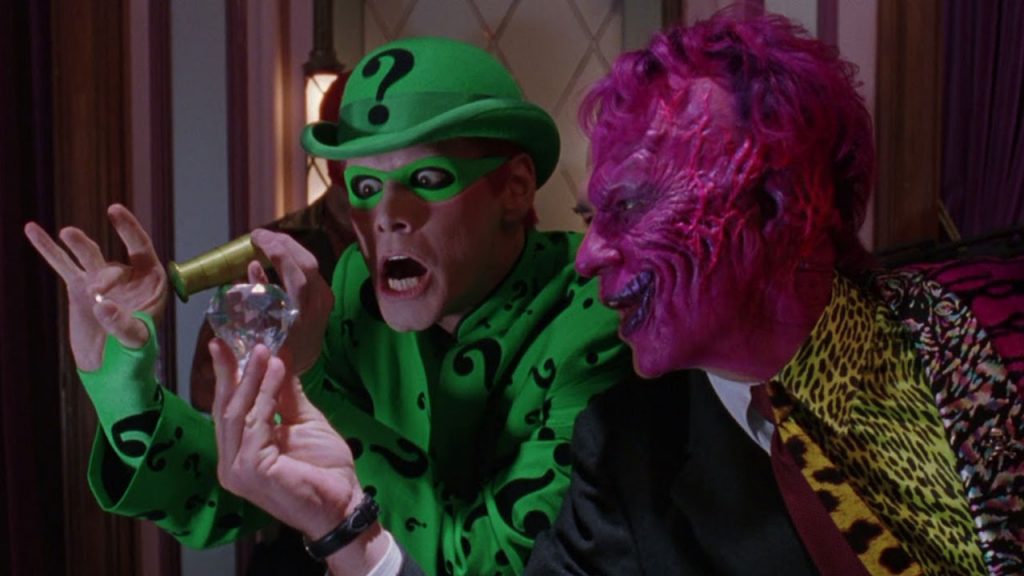So this is a bit of a difficult confession for me…I don’t really like the Christopher Nolan Batman movies.
Ok, before you angrily take to your keyboards to tear me a new one in the comments, hear me out. I understand why the Nolan Dark Knight trilogy has had such an enormous cultural and cinematic impact. When Batman Begins was released in 2005 live action comic book superhero movies were largely dead in the water, and while Marvel was barely hanging on with Bryan Singer’s X-Men movies and the Sam Raimi Spider-Man trilogy any DC movie properties had pretty much sunk without a trace. The last live action Batman movie, Joel Schumacher’s Batman & Robin, was released in 1997 and it was widely considered to be one of the worst movies ever made. Live action comic superhero movies had gotten too goofy and ridiculous, largely as a result of studio executives desperately trying to make them more family friendly i.e more marketable in terms of toys and merchandise.
Batman Begins changed all that. In a single movie Nolan very efficiently stripped away the camp, and threw family fun time with Batman right out of the window, delivering the kind of unashamedly dark, brooding, and brutal Batman movie that made studio execs wet themselves with fear…
…and audiences loved him for it.
Then as the Nolan Batman trilogy unfolded over the next seven years they very quickly became a benchmark for the modern comic book movie. Looking back at the Nolan Batman films it is clear that they were far from perfect, audiences just didn’t have anything better to compare them with at the time. Yet as a result of their success the dark storylines, brooding emo characters, and muted colour palettes, have been something that DC have been rather reluctant to move away from. From Superman Returns, to Man Of Steel and Batman v Superman, DC has continued to approach live action film making like a frightened child clutching a security blanket that has had all the colour and distinguishing features washed out of it.
Meanwhile Batman animated movies have gone from strength to strength, largely as a result of having the most excellent foundation stone that could possibly exist, Batman: The Animated Series.
Batman: The Animated Series was a children’s television show that originally aired between 1992 and 1995. If you’re around my age and were not much of a young comic reader then this was probably the Batman that you were most familiar with while growing up. Combining the storyline elements from the comic with the gritty, Gothic aesthetic of the Tim Burton Batman movies of the 80s, Batman: TAS was a revelation in children’s television. It didn’t pull any punches, treat the young audience like it was stupid, or cynically try to sell them toys. Instead it delivered quality storytelling, fantastic animation, and a complimentary side order of some of the best voice acting that any of us had ever heard. Batman: The Animated Series is still ranked by many as one of the best comic to screen adaptations ever made, and it spawned two feature films, Batman: Mask of the Phantasm in 1993, and Batman & Mr. Freeze: SubZero in 1998. In the years since, Batman, both alone and as a part of the Justice League, has consistently been a feature of DC animated movies. Since DC Entertainment is now a subsidiary of Warner Bros. and they made a deal with Lego in 2009, a number of Lego movies have also featured Batman.
So why do I say that the animated incarnations of Batman are better than the live action? Well there are several reasons, the most obvious being the differences in structuring between animated and live action storytelling. However the most important reason is this, none of the Hollywood scriptwriters and directors who have tackled Batman in live action have ever truly understood who Batman is, or the connections he has with the other important characters in his life.
This may seem like a bold statement, and perhaps it is, but it’s really a question of examining what makes the portrayals of Batman in animated and live action forms different from each other, and why those differences potentially don’t really need to be there.
1. Structuring
The traditional Hollywood superhero movie consists of several elements, origin of hero, origin of villain, establishment of evil plot, introduction of potential love interest, mentor figure (who may or may not die) and several scenes of angst. This is topped off with a big finale containing an epic showdown between hero and villain where villain is defeated, which will probably includes several explosions. One thing that recurs as part of all these elements is the concept of exposition, the insertion of important background information within story. Live action movies have a long standing love affair with exposition, they love to firmly establish who everyone is and where they came from.
In a comic based movie exposition is often considered of particular importance, this is because Hollywood studios prefer working on the assumption that nobody seeing the movie has any prior knowledge of any of the characters within the story. They fear that if they assume that the audience knows who characters are already that that will put off prospective movie goers who don’t, and so limit their audience. It seems much more acceptable to have a character pop up with limited or sometimes no exposition at all in an animated movie. Animated Batman movies are often structured like an extended episode of Batman: TAS, or one of its follow on shows like The New Batman Adventures or Batman Beyond. Characters like The Joker can just be there, no origin or establishment necessary. The tone will establish that he and Batman have a long established connection, and that this particular story exists as one of many in their history together. It’s assumed that animated movies are only watched by niche audiences, so it’s ok to leave the exposition fairies at home when it comes to character origins.
However is that really true? In Nolan’s The Dark Knight they make a point of not giving The Joker an origin story, the first you see of him is the bank robbery that he leads with his associates. The audience accepts that he is just there, and Nolan makes it a plot point that nobody is able to establish The Joker’s true origin or identity. Every story The Joker tells about where he got his facial scars is different, but delivered with conviction, as if The Joker himself believes the story when he tells it. The lack of exposition for The Joker was incorporated as a character element. His origins were a mystery, and you could take nothing that he said at face value.
In the more recent The Lego Batman Movie NONE of the heroes or villains are given an origin story, it’s just accepted that you know who they are and why they are there. The movie really seems to benefit from this, being able to skip over the how we got heres and get right down to the business of the story. The origin of Batman is alluded to, but for the most part the presumption is that you know this stuff already. This really works because, let’s be real here, there’s only so many times you can watch Bruce Wayne’s parents get shot in an alley and have it make the same impact. While The Lego Batman Movie is animated, it’s meant for viewing by mainstream family audiences, one of the biggest demographics in cinema. That’s not exactly the small niche of comic book readers and fans of Batman: TAS. While it is important to establish regular jumping on points for newbies when building a long running shared universe between characters, as Marvel has found with the MCU, the DC extended universe is still in its infancy. It has a long way to go before it needs to take a pause and recap. Come on DC, we know who Batman is and who most of the main players are in a Batman story, enough with the exposition already.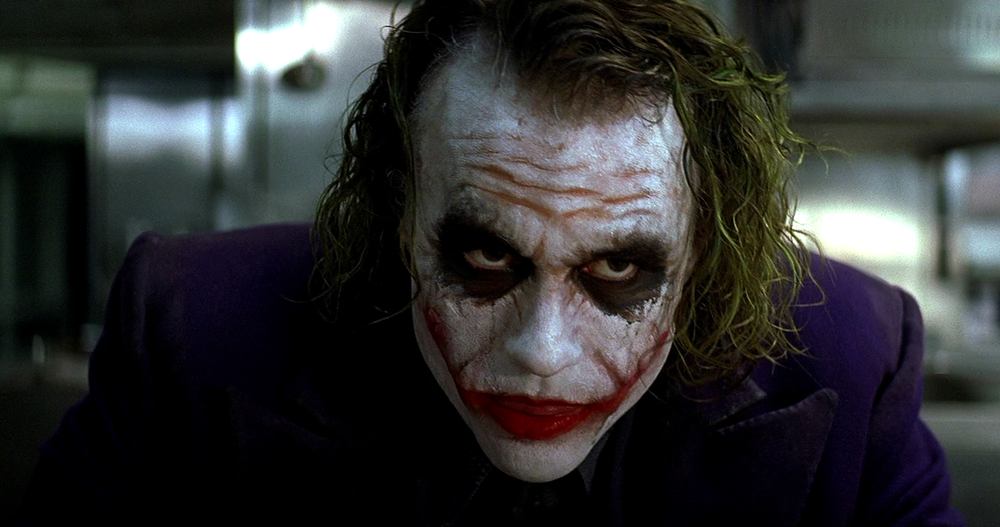
2. The Love Interests
No bones about it, DC live action movie love interests SUCK, and not just for Batman. For some reason Hollywood just cannot get the balance right for potential partners of DC superheroes. Lois Lane, gutsy and street smart journalist who pursues dangerous stories, is reduced to an idiotic damsel who constantly gets herself into trouble and has to saved by Superman (seriously he has to save her FOUR TIMES in Batman v Superman alone) Immortal amazon demigoddess Wonder Woman is paired with a wet behind the ears Chris Pine as Steve Trevor, the man who in the comics was the reason Diana gave up her life on Themyscira and became a protector of mankind.
Batman hasn’t fared any better with his live action love interests. Tim Burton veered between the dull and often reduced to a damsel Vicki Vale (Kim Basinger) and the better but still slightly weak interpretation of Selina Kyle AKA Catwoman (Michelle Pfeiffer) Joel Schumacher gave us the very odd and one-dimensional Dr. Chase Meridian (Nicole Kidman) and Julie Madison (Elle Macpherson) who seems to be there solely because the scriptwriter thought “Wait…it’s Bruce Wayne, he’s got to be dating SOMEBODY” Nolan decided to forgo the traditional love interests of the Dark Knight, instead opting for a completely new character, Rachel Dawes (Katie Holmes and Maggie Gyllenhaal respectively) Rachel was supposed to be a childhood sweetheart of Bruce, and the only one who truly knows him. However she mostly comes off as exceptionally boring, and more than a little irritating. She spends most of Batman Begins nagging at Bruce, then gets unceremoniously damseled and fridged in The Dark Knight. Nolan then tried to jump ship back to Selina Kyle, styling her as a master thief and casting Ann Hathaway in the role. However the chemistry is never really there between Kyle and Wayne, and the duality and shared inhabitance of a space somewhere in between light and dark that drew them both together in the comics is all but forgotten. The current incarnation of Batman has yet to really explore the love life of Batman, and perhaps that is just as well.
In the comics there were several women that Batman loved over the years, and his relationships with them affected him significantly. Many of these loves were depicted in the animated shows and movies, and I would say more successfully than in the live action films. This is precisely because the roll on continuity established within the animated Batman stories really drives home that Bruce Wayne was not born Batman, he had a life before he donned the cowl and he continues to have a life beyond it. At various times that life almost included marriage, Batman: Mask Of The Phantasm features Andrea Beaumont, a former girlfriend of Bruce from university, to whom he proposed. He almost gave up the promise to fight crime that he made to his dead parents in order to marry her, and it is when she breaks off their relationship and leaves that he decides to become Batman. Son Of Batman covers the child that Batman has with Talia al Ghul, daughter of supervillain Ra’s al Ghul, after she roofies and rapes him. The on/off relationship that Batman has with Selina Kyle is addressed in Batman: TAS. The major difference in how these women are portrayed as opposed to live action is that each has their own tale to tell, separate from Batman’s.
The lesson to be learned here is that roll on continuity doesn’t need to be a problem in live action Batman movies, the scriptwriters and directors just need to be a little less afraid of letting Bruce Wayne have a life and love BEFORE he becomes Batman. I don’t mean a bland and pointless character like Rachel Dawes, I mean a well written woman of substance who has her own story and is interesting as a character even without a romantic entanglement with Bruce. The problem of lame live action love interests is not unique to Batman, but in his case it connects with a deeper problem.
2. The Conundrum Of Batman AND Bruce Wayne
One of the most important aspects of any superhero movie is the theme of duality, the differences between how the character conducts themselves while doing hero stuff and the face that they present publicly. In the traditional superhero story the public face is usually in the form of a disguise that is designed to fool the rest of the world into thinking that they’re just another regular Joe. Superman dons the form of mild-mannered and bespectacled Clark Kent, and Wonder Woman uses the disguise of Diana Prince. However in the case of Batman and Bruce Wayne it is not so simple. Bruce Wayne is not the alter ego disguise of a super being trying to pass as human, Bruce Wayne IS human, and (aside from being obscenely rich) he has no innate superpowers to speak of. In his case the roles are reversed, Bruce Wayne is not the disguise of Batman, Batman is the face that the human Bruce Wayne adopts when he goes out into the city to fight crime, not as a superhero but as a vigilante. The duality of his nature means that Batman is not just an outward disguise that Bruce Wayne wears when dealing with criminals. Batman is a part of him, an almost entirely whole and separate identity that exists within the same mind and body as Bruce Wayne.
Here is when we run into problems, because every live action movie version of Batman has either portrayed Bruce Wayne well, or Batman, they cannot seem to wrap their heads around both. I would say that the only time the balance between Batman and Bruce Wayne was nearly achieved was in the Tim Burton movies, in which Batman was played by Michael Keaton. Burton and Keaton actually seemed to understand that Wayne and Batman were two different personas, and that Batman was as much about detective work and theatrics designed to intimidate his opponents as defeating them with brute strength. Batman was not just supposed to be a crime fighter, he was supposed to be a legend that criminals would fear. Keaton Batman had the dark menacing voice and visage, and he had plenty of gadgets and gizmos that he used to enhance the theatrics of his performance. The grappling hooks and smoke bombs that he used to appear and disappear, the cape unfolding into giant bat wings, all of it is designed to make him seem like a fantastical creature out of myth, while making it clear to the audience that Batman doesn’t have superpowers. Keaton’s Batman is only hampered by the suit, which clearly restricts his movements and leaves his action scenes and fight choreography somewhat stilted at times.
Keaton’s Bruce Wayne was a mix of pensive and almost comically awkward, probably owing to Keaton’s skill as a comedic performer. Wayne was slightly bumbling, particularly around women, and his mind always seemed permanently on the edge of distraction, as if he was never fully there. The key part was that Keaton at least attempted to differentiate the character of Batman from the character of Bruce Wayne. Val Kilmer snoozed his way through Batman AND Bruce Wayne, giving the lifeless performance of someone who really didn’t want to be there. George Clooney was, well, George Clooney, good looking and suave to a fault. Clooney is more than capable of delivering dark and brooding, as anyone who has ever seen From Dusk ‘Till Dawn will testify, but the material he had to work with for Batman And Robin was so awful that he never really had a chance to deliver the goods acting wise.
Christian Bale, of the Nolan Dark Knight trilogy, got the most to do with both Batman and Bruce Wayne. He got three movies in which to explore a lot of the facets and history that made Bruce Wayne who he is and, by extension, created Batman. From wandering the world as a homeless vagabond, to ninja training with Ra’s al Ghul, then culminating in the creation, success, failure, torment, and resolution, of Batman. And now we get to why I don’t like the Nolan Batman trilogy….
Christian Bale’s Bruce Wayne lacks any kind of charm or charisma. Aside from one scene where Wayne drapes some models over himself, in a halfhearted attempt to pretend he’s a millionaire playboy, he is moody, selfish, despondent and rigid. Seriously, when The Lego Batman Movie makes fun of how needlessly angsty and childish that portrayal was then you have to know that you messed up somewhere. The whole idea is supposed to be that Bruce Wayne cares about Gotham City and its people, that’s why he becomes Batman in the first place. Bale’s Wayne spends most of the time caring for nothing but himself, not the company his father founded, the people that work there, or the people of the city beyond occasionally trying to bang Rachel while she whines at him for not caring.
Then there’s Christian Bale’s Batman, and I know you’re going to hate me here, but I think the now famous guttural growl that Bale used to try and differentiate Batman from Bruce Wayne was AWFUL. In a trilogy of movies that took themselves so seriously, removing any elements of the fun and silliness that had been the trademarks of previous Batman movies, the voice is so goofy and out of place that it completely throws me out of the story. How can ANYONE take Batman seriously with that voice?!? You need subtitles to understand some of his lines! Then there’s the fight choreography, I honestly can’t understand how other people don’t see how bad it is. It’s so obvious that Bale’s movements are severely hampered by the Batman suit, and that they try to cover this up in fight scenes with fast camerawork and editing cuts. This is especially apparent in The Dark Knight Rises when Batman faces Bane, what should be an epic fistfight between two well trained badasses is slow, stilted, and awkward, regularly cutting away to faces of bystanders to try and disguise the terrible choreography.
Ok, rant over…honest…
As for Batman v Superman, the main word for Ben Affeck’s performance is…ok. This particular film takes a lot of the story elements from the Frank Miller story The Dark Knight Returns, and so we see an older Bruce Wayne who has worn the heavy mantle of Batman for almost 20 years. Affleck’s Bruce Wayne is charming and courteous in public, but a tormented drinker in private. The Batman of Affleck is raw and more than a little paranoid, but Affleck struggles to pull off intimidating. In fact if it wasn’t for the thickly armoured Batsuit, which also lights up his eyes and alters his voice, you get the feeling the criminals of Gotham would have laughed in his face long before Superman ever had to show up.
On the other hand the animated Batman series and movies really seemed to understand the differing personalities of Batman and Bruce Wayne. The Bruce Wayne of the animated stories has a fully developed persona that is almost completely separate from Batman. He has a sense of humour, he has friends, he dates women, he is fully involved in the running of Wayne Enterprises, and he does a LOT of charity work. He runs several foundations, including The Thomas Wayne Foundation for medicine and medical help, and The Martha Wayne Foundation, which runs several orphanages, funds free schools, and supports the arts. In nearly every live action incarnation of Batman, Bruce Wayne has been sidelined as a rich but powerless and ineffectual figure without the the persona of Batman. Animated Batman understood that Bruce Wayne has AS MUCH POWER as Batman does, just in his own way. Bruce Wayne is as much of a figurehead to Gotham City as Batman, a community leader and role model who involves himself in everything from politics and commerce, to environmentalism and philanthropy. In private Bruce Wayne is haunted, both by the deaths of his parents and the loss of other figures through his role as Batman. This is covered superbly in animated movies such as Batman: Under The Red Hood, and The Dark Knight Returns.
The Batman of the animated stories is focused, resourceful, and cunning. Though animated Batman is dark, as someone who walks in the shadowy criminal underworld of Gotham City would need to be, he isn’t really brooding or angsty. What animated Batman really is is driven, when in the cowl of Batman he is completely dedicated to stopping criminals, solving crimes, and protecting the people of Gotham. While live action movies like Batman v Superman take elements from stories such as The Dark Knight Returns and Death Of Superman, they don’t commit to any of them. The sidelining and overly angst-ridden portrayal of Bruce Wayne, and the focus of Batman on overblown action sequences rather than a combination of detective work, theatrics, and fighting skill means that the live action movies always seem rather empty and shallow. As in the case of the last entry, this connects with another problem that live action Batman movies always seem to suffer…
3. The Sad Case Of Gotham City
This is a much more simple one than the previous entries on this list, in every live action incarnation of Gotham City the criminals seem to have free reign in the city, the police force is either ineffectual (Burton) or corrupt (Nolan) and the residents are always completely cowed and miserable. A dark and brooding setting with a distinctly noir atmosphere is one thing, but Batman is not a film noir story. The dual roles of Bruce Wayne and Batman are supposed to serve as shining beacons to the people of Gotham, demonstrating that they have the power to make their communities better. This only works as a storytelling device if you offer up some contrast to the people of Gotham that become victims of the city’s criminal elements. Without showing elements of ordinary criminal-free life, such as friendships, families, love, and happiness, you paint the picture of Gotham as a city completely devoid of hope. Without hope there is no life, and without life, what exactly is it that Batman is fighting for?
In contrast, the animated Batman stories often gave a glimpse of life in Gotham as it was for its ordinary citizens, and of them assisting Batman in defending their communities. Compare the Gotham populace of The Dark Knight Rises to the Gotham of animated The Dark Knight Returns. When Bane takes over the city and releases the army of prisoners, the population of Gotham either cower in their homes, or immediately start looting and burning. NONE of the ordinary people seem interested in trying to fight for their neighbourhoods. It’s all so absolute, and it undermines the effectiveness of Batman as a role model since having good people do nothing but cower implies that being good also means being weak. In The Dark Knight Returns the US is hit with an electromagnetic pulse and a nuclear winter, causing the entire country to descend into chaos. In Gotham the criminals attempt to seize power, and many citizens begin looting and burning, but when rallied by Batman and Jim Gordon the ordinary people of Gotham start to take back control. They work together, putting out the fires, stopping the looting, and forming a militia lead by Batman to restore order, making Gotham the safest city in America.
I’m aware that DC are somewhat in love with the shadowy, Gothic aesthetic for Gotham characterised by the Tim Burton movies, and to be fair Batman: TAS also took its cue from there in what Gotham City would LOOK like. However a dark and brooding looking city doesn’t need to mean its people have to be dark and brooding as well. Come on DC, let’s see some happy people in live action Gotham for a change.
Speaking of the criminal elements of Gotham, no examination of Batman would be complete without taking a look at…
4. Villains
A hero story only works as well as the threat they face, and the villains of Batman are easily as iconic as the hero himself. This is no small thing, a well crafted villain is not an easy thing to create. The Joker in particular, violent, trickster, sociopath that he is, has captured public imagination for decades. The American Film Institute ranked The Joker number 45 in their list of the top 50 greatest villains of all time. Wizard magazine rated The Joker number 5 in their list of the 200 greatest comic book characters of all time.
It’s often remarked that The Joker and Batman are two sides of the same coin, incomplete without the other. The Joker is supposed to be a shadowy reflection of what Bruce Wayne could have been if the trauma of losing his parents had sent him in a slightly different direction. In this The Joker is not alone, most of the main villains that Batman faces reflect a part of him. Harvey ‘Two-Face’ Dent is a mirror that reflects the duality of Batman and Bruce Wayne. The one side that was Harvey Dent, the caring and law abiding man that was the District Attorney of Gotham City, and the other side that is violent and twisted with his own perception of justice. Catwoman is representative of Batman’s status as a vigilante, working outside of the law in the cause of justice and walking the line between good and evil. Mr. Freeze embodies Batman’s hurt at having lost people that he loves, and how it can often make him seem cold and unfeeling. Even The Riddler is a reflection of Batman’s fascination with puzzles. After all, Batman is a detective, and what is the mystery of a crime if not a puzzle to solve? Penguin connects with Batman’s wealth, and the idea of money being a pathway towards corruption. Scarecrow is all about Batman’s interest in the mind, and his fear of the darker elements of his own psyche. The overall idea is that Batman can understand, and even at times empathise, with those with whom he battles.
However this is something that the live action movies have never managed to convey. Nolan halfheartedly tried with The Joker, by having him declare that Batman completes him in the interrogation scene of The Dark Knight. Burton also attempted to connect Batman and The Joker by having The Joker be the one that killed Bruce Wayne’s parents. The Joker got the best treatment in the live action movies, but the other villains did not fare so well. Nolan Bane is a lump of muscle with a ridiculous voice while the Bane of Schumacher is…well…whatever this is. Talia al Ghul is completely wasted, barely getting any screen time before being revealed as the mastermind of the most convoluted plot ever conceived outside of a Bond film. Two-Face is either whiny (Nolan) or something out of a pantomime (Schumacher) The connections that are supposed to exist between these characters and Batman are never really established, and once again it is something that comes down to structuring. A connection takes time to build, and Hollywood superhero movies typically only allow a single movie for a villain to be introduced, fought, and defeated. This doesn’t leave much time for live action Batman to really develop much of a relationship with the villains. This is a shame, because the complex, connected relationships that Batman has with his enemies are one of the best things about his story.
Of course it can be argued that a villain that is often defeated poses no inherent threat, but the writers of animated Batman have never held back in making the villains of Batman truly despicable. They also give the villains enough wins (and enough of a body count) to have them continue to be intimidating even after they lose. The villains can, and often do, kill people. This then contends with the personal code of Batman that has existed since the Batman comics of the 1940s, that Batman hands criminals to the police to face justice, he does not kill them. With The Joker in particular this is a really deep and important internal conflict for Batman, they are inexorably intertwined. The Lego Batman Movie presents this concept as a comparison with a romantic relationship. The Dark Knight Returns demonstrates it with Batman lamenting that he has continued to allow The Joker to live even after so many innocent people have died. In The Killing Joke the idea is represented in a monologue by The Joker about how Batman is no different from him, and how all it takes to make anyone as insane as they are is to have one bad day.
In order for Hollywood to truly understand Batman, they have to understand his enemies. While Superman gets to face Lex Luthor time and time again, live action DC movies seem to be completely terrified of giving Batman recurring villains. As long as they continue to avoid it, Batman will never get a complete portrayal on the big screen.
Ultimately the problem with live action Batman comes down to this, in order for DC to hope to compete with the MCU they have to move away from their Nolan security blanket. They need to let go of the teenage angst, the muted palette of reds, greys, black and browns, and the po-faced, completely joyless storytelling. It was the Gotham hero we deserved at the time, but not the one it needs right now. Instead, as far as Batman goes, DC should look at the already excellent array of animated movies in its arsenal, from The Killing Joke, Under The Red Hood, The Dark Knight Returns, even The Batman vs Dracula (which I watched recently and is better than any movie titled Batman vs Dracula has any right to be, it has Peter Stormare as Dracula!) In terms of live action Batman Hollywood could learn A LOT about great characters and storytelling from Batman: The Animated series, and the animated Batman movies. This is even true of something silly like The Lego Batman Movie, because while that film did make fun, it was clear that they at least understood and (more importantly) LOVED the source material. New Batman stories are coming all the time, both in comic and animated movie form, there’s a lot to work with here. Batman is also not alone in being a DC hero with a whole bunch of really good animated movies, and DC is clearly looking to make more live action adaptations of the stories covered within them.
Perhaps, instead of looking to Nolan for inspiration in building an extended universe, DC should look at the one it has already got.

